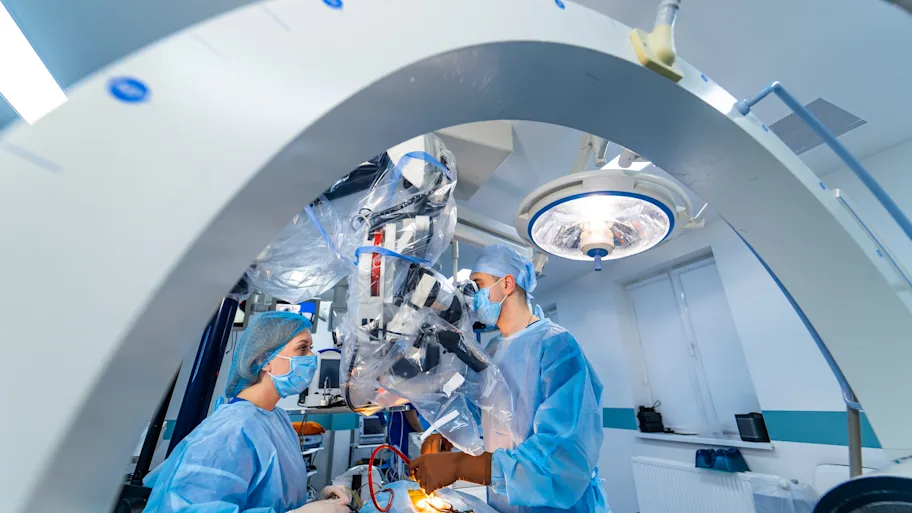
- Science news
- Featured news
- No one knew if lymph vessel cells bear cilia. Turns out, they’re indispensable for health
No one knew if lymph vessel cells bear cilia. Turns out, they’re indispensable for health
By Mischa Dijkstra, Frontiers science writer

Cross-section of lymph vessel with a thin layer of Lymphatic Endothelial Cells (LECs) lining the inner cavity. Credit: Convit / Shutterstock.com
Cellular ‘antennae’ have a key, previously unknown role in guiding the development and regrowth of lymph vessels, including during inflammation, cancer, and wound healing. This discovery, in a study by the open access publisher Frontiers, could ultimately inspire new medical therapies.
Less than 10 µm long. At most one per cell, if a particular tissue has them at all. But as shown now for the first time, 'primary cilia' are not just present on the inner and outer lining of the lymph vessels of mammals: it turns they're actually indispensable for their growth and function throughout life. This discovery, published today in the open access journal Frontiers in Cell and Developmental Biology, could inspire the search for new therapies in medicine.
The primary cilium is an antenna-like sensory structure ('organelle') found on the outside of many types of cell. Until now, it was unknown if primary cilia occur on the lymphatic endothelial cells (LECs) that that line the lymph vessels. The new study shows that the answer is emphatically yes: Cilia are actually essential for LECs, because the signals they gather guide the growth and function of the lymph vessel network, not only under normal 'homeostatic' conditions but also in response to wounds and cancer. Mice that don't have primary cilia on their LECs develop lymph vessels that are overgrown and dysfunctional.
“The first images we took were so exciting! It turns out that LECs do have primary cilia which are clearly important for patterning the growth of lymph vessels,” says corresponding author Dr Darci M Fink, an assistant professor at the Department of Chemistry and Biochemistry of South Dakota State University.
“The discovery of this new sensory and regulatory ‘hub’ could fundamentally change how we think about these cells. Intervening in the assembly of cilia by cells or in the signals they sense could let us control the growth of lymph vessels in novel ways.”
Growth of new lymph vessels continues throughout life
The lymphatic system of vertebrate animals consists of hundreds of lymph nodes throughout the body linked by a network of vessels. Lymph vessels play a key role in health and homeostasis: they allow the movement of immune cells, drain excess fluid from tissues and return it – clear of pathogens – to the bloodstream, and absorb fat molecules for energy.
They first sprout during embryonic development, but ‘lymphangiogenesis’, the growth of new lymph vessels, needs to continue throughout life, especially during inflammation and wound healing. Faulty lymphangiogenesis can cause edema, impaired healing, chronic inflammation, and tumor growth.
Download original article (pdf)
“Primary cilia are an essential part of the function of many cell types, including the lining of other tubes such as blood vessels, breast ducts, and kidney tubules. Now we can add LECs to that list. Understanding how primary cilia guide the movement and cell division of LECs and the growth of the lymph vessels is the next exciting challenge. This could ultimately let us exploit these mechanisms for medicine,” says Fink.
First, Fink and colleagues used microscopy to show that in tissue from healthy mice, primary cilia protrude from LECs towards the inside and outside of lymph vessels. Primary cilia are particularly common on LECs at the growth tip of vessels, where information from the microenvironment gets sensed. These observations suggest that LECs use their cilia to gauge their microenvironment, for example sensing the local strength of lymph flow or the presence of signaling molecules.
'Knocked out' gene
Next, the authors used a common genetic 'cut-and-paste' tool (called Cre-Lox recombination) to breed a new 'transgenic' line of mice, in which the key gene IFT20 – necessary for the molecular buildup of cilia and the within-cell transport of large molecules – is blocked (‘knocked out’).
As expected, the majority of LECs from these mice lacked a primary cilium. The embryos showed strong edema (swelling up with liquid), and their lymph vessels were wider than normal, wrongly branched, wrapped with too much muscle, and inappropriately contained red blood cells. These results mean that a functional cilium on embryonic LECs is necessary for the proper development of the first lymph vessels in embryos.
Necessary for growth of new lymph vessels in inflamed tissues
Finally, Fink’s group studied whether primary cilia play a role in guiding lymphangiogenesis during inflammation, wound healing, and tumor growth by adult mice. To cause local inflammation, they used the so-called ‘cornea inflammation bioassay’ where small synthetic sutures are put (under anesthesia followed by pain control) into the cornea of the eye.
This is known to stimulate the LECs at the edge of the cornea to sprout, divide, and move towards the damage, forming new lymph vessels. As expected, this process was faulty in IFT20-knockout mice, where the network of new vessels became too dense with too many branches. The authors conclude that without primary cilia, lymphangiogenesis in response to damage goes poorly and results in lymph vessels that aren’t properly patterned.
“The striking overgrowth of vessels after the loss of primary cilia points to a key role of cilia in the physiology of LECs. Our challenge is now to find the signals sensed by them. Across species, cilia are known to sense small molecules, physical forces, osmotic changes, and light, so in principle lymph cells have many options for gathering information,” concludes coauthor Prof Gregory J Pazour, University of Massachusetts Medical School.
REPUBLISHING GUIDELINES: Open access and sharing research is part of Frontiers’ mission. Unless otherwise noted, you can republish articles posted in the Frontiers news site — as long as you include a link back to the original research. Selling the articles is not allowed.






